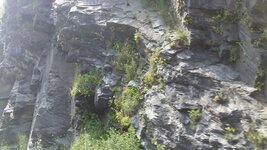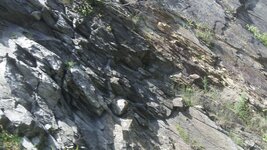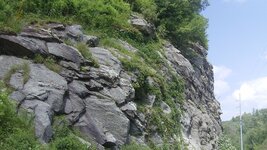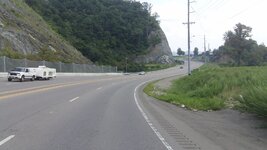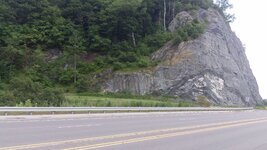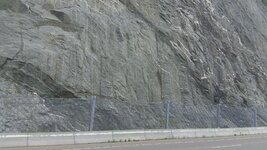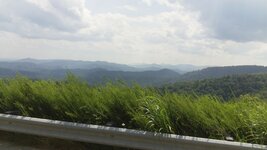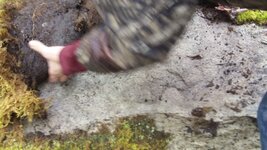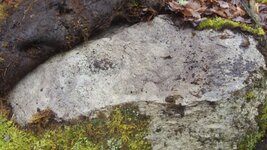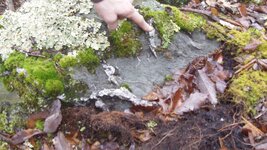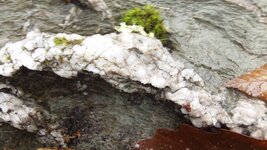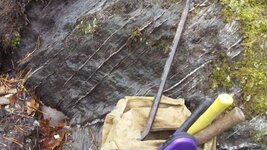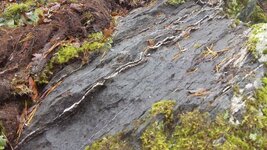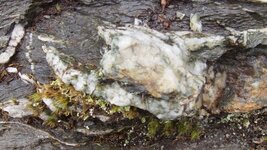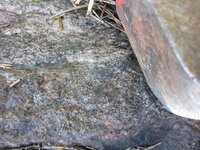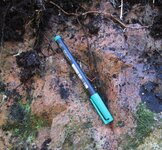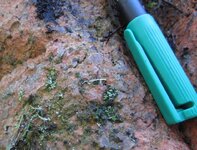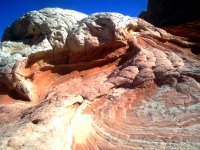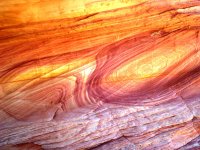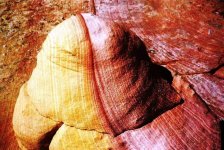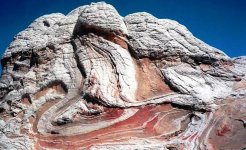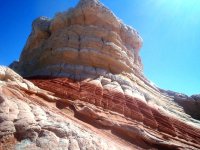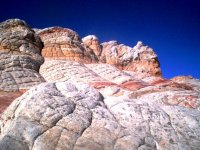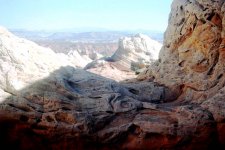Eu_citzen
Gold Member
- Sep 19, 2006
- 6,484
- 2,111
- Detector(s) used
- White's V3, Minelab Explorer II & XP Deus.
- Primary Interest:
- Prospecting
During my fieldtrips I often find something I like to photograph. I collect "geological pictures" from my trips in Sweden.
Thought I'd share some of them.
This one is interesting. To the left we have rhyolite, a volcanic rock. To the right of the big "bend" we have serpentinite. A metamorphic rock.
The "bend" (or deformation) is possibly a result of the alteration of the original rock to serpentinite. Simply because it increases in volume when it alters.

I love samples which are small enough to fit into the palm of my hand and still tell a little history.
This little metarhyolite shows what "faults" can look like in a small scale. (notice the red band in the lower right)

Breccia is something I don't see to often here. It is basically a fractured rock that got glued together.

Gneiss is also a metamorphic rock. Often with distinct "bands". This was a large boulder transported during the last ice age.

Here is a cool photo of a large rock wall. Also made of gneiss, from near the coast. The formation is called "Coastal gneiss".
I know, there seems to be a lack of fantasy for some names.

More gneiss, this time granitic gneiss. Notice the pegmatite vein near the middle. Thought it was neat.

Antiform, a little larger type. Basically an "upwards" fold, well part of in this case.

An intrusion of basalt. About 4 metres thick. If you look closely you can see pegmatite and quartz veins, to.

During the last ice age the ice sometimes "scraped" on the bedrock. It could then create "scratches", like those in the picture.
They help indicate which direction the ice had. Compass for size.

Sometimes you run out of time when you find something cool.
Here is one example, I never had enough time to examine it closely but think this is an ancient fault:

And to finish this off, a shear zone. The shear zone cut the vein in two.

Thought I'd share some of them.
This one is interesting. To the left we have rhyolite, a volcanic rock. To the right of the big "bend" we have serpentinite. A metamorphic rock.
The "bend" (or deformation) is possibly a result of the alteration of the original rock to serpentinite. Simply because it increases in volume when it alters.

I love samples which are small enough to fit into the palm of my hand and still tell a little history.
This little metarhyolite shows what "faults" can look like in a small scale. (notice the red band in the lower right)

Breccia is something I don't see to often here. It is basically a fractured rock that got glued together.

Gneiss is also a metamorphic rock. Often with distinct "bands". This was a large boulder transported during the last ice age.

Here is a cool photo of a large rock wall. Also made of gneiss, from near the coast. The formation is called "Coastal gneiss".
I know, there seems to be a lack of fantasy for some names.


More gneiss, this time granitic gneiss. Notice the pegmatite vein near the middle. Thought it was neat.

Antiform, a little larger type. Basically an "upwards" fold, well part of in this case.

An intrusion of basalt. About 4 metres thick. If you look closely you can see pegmatite and quartz veins, to.

During the last ice age the ice sometimes "scraped" on the bedrock. It could then create "scratches", like those in the picture.
They help indicate which direction the ice had. Compass for size.

Sometimes you run out of time when you find something cool.
Here is one example, I never had enough time to examine it closely but think this is an ancient fault:

And to finish this off, a shear zone. The shear zone cut the vein in two.




